Rutledge Wood’s LS-Powered RWB Porsche 911
The 1980s are often remembered for mullets, shoulder pads, and leg warmers, but for automotive enthusiasts, the decade is also memorable for the amazing cars it produced: the side-straked Ferrari Testarossa, stainless steel DeLorean DMC-12, rally-bred Audi Quattro and brawny Camaro IROC-Z are just a few standouts. The ‘80s were a decade of automotive greatness, and for a young automotive enthusiast, a fantastic time to be entering the hobby.
This was certainly the case for a young Rutledge Wood, who’s heart was taken by two heavyweights of the ‘80s. On his bedroom wall hung a poster of the striking Lamborghini Countach and another poster of the ever-timeless Porsche 911. Although he’s still working on the Lambo, his Porsche dreams became a reality last year when he finally acquired a red 1986 Porsche 911 Carrera 3.2.
As many enthusiasts know, air-cooled Porsches have gone stratospheric in value over the last few years, meaning that finding a clean G-body for the right price is no small feat. Rutledge had been wanting an air-cooled 911 for some time when a friend told him about a red Carrera 3.2 he had found with an unassuming “For Sale” sign in the window. The car was priced well under the market, and although friends, a good deal is a good deal. Rutledge’s friend kept the car’s location to himself and scooped the Porsche up in the next few days. After the purchase, Rutledge found out that the Porsche had been sitting in a driveway about five minutes from his house all along – drats.
That friend made a few modifications to the 911 over the next year and a half, but soon developed a fancy for one of Rutledge's cars. With each lusting after the other’s ride, they settled on a trade and Rutledge was finally the owner of the little red Porsche.
Although a pretty thing as it sat, Rutledge purchased the 911 with big plans for its future. As he explained, “I called up my sponsors and told them that I wanted to build this crazy 911 – I wanted it to feel and look like an RSR that went to the gym and got shredded. Thankfully, my sponsors are enablers.”
Engine and Transmission:
Rutledge first stopped at Kenwood Rod Shop in Peachtree City, Georgia where his air-cooled 911 became air-cooled no-more. The original Porsche flat-six produced a commendable 200-or-so horsepower when new, but with a craving for speed, Rutledge knew this wouldn’t be enough. As a result, the boys at Kenwood Rod Shop began the 911 project by ripping out the Porsche flat-six and prepping the engine bay for a new powerplant courtesy of Summit Racing.

Rutledge had originally wanted to swap in a Toyota 2JZ twin-turbo inline-six, but with time and fabrication restraints, he opted for a mill straight out of Detroit. The new water-cooled GM Performance LS3 V8 produced an impressive 525 horsepower, and although cramming an American V8 into the sweetheart of Stuttgart may bring tears to some purists' eyes, there’s no denying the benefits of the modern engine. The Porsche’s original 3.2 liter flat six weighs in at roughly 480lbs, while the aluminum 6.2 liter LS3 tips the scales at only 418lbs – adding more than 300 additional ponies as well.
Obviously, going from an air-cooled engine to water-cooled engine required some custom work. The G-body 911 was never designed to have radiators at the nose, but to cool the new V8, three in-line radiators were required with two electric water pumps (one at the front and one at the rear). As Rutledge explained, “we originally only had one radiator, but on our first test drive, the car started to overheat and we knew we would need some more ammo.”
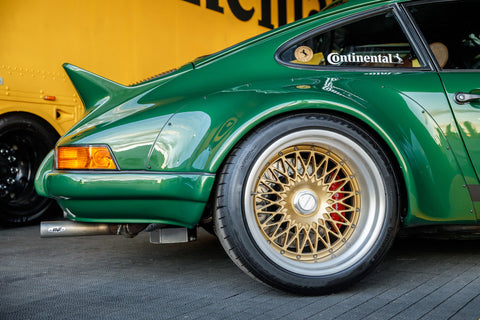
All that American muscle under the hood also required a beefed up transmission. Rutledge told us that the “factory G15 transmission was too weak for the new LS3, so I began searching for a Porsche G50 [transmission]. I eventually found one on eBay that I then sent to Bill Rader Motorsports for modifications.” The G50 is one of the most well regarded Porsche transmissions, not only for its actuation and feel, but also its strength. Likewise, when it comes to Porsche transmission, Bill Rader Motorsports is the best in the business. The Las Vegas, Nevada based shop took the factory 5-speed G50 transaxle and added a Guard billet limited slip. The new LSD helps manage the Porsche’s newfound power by keeping the rear end in check.
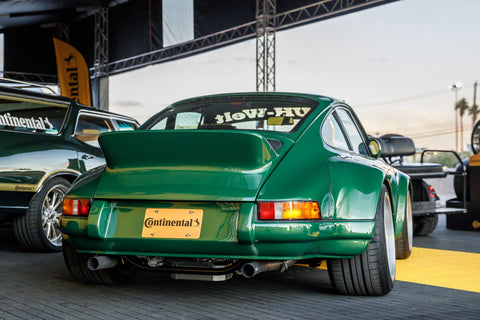
The finishing touch to the engine swap was a new exhaust system. To make sure that the GM mill flowed as much air as possible, Rutledge turned to MagnaFlow. Unfortunately, MagnaFlow doesn’t have off-the-shelf Porsche G-body V8 swap exhaust systems, but it does have a number of custom builder parts that make exhaust fabrication a breeze. Rutledge’s 911 exhaust began with a set of LS3 headers designed for the Chevrolet Camaro.
In this application, they are reversed to face the front of the car. From there, Rutledge opted for two electric MagnaFlow exhaust cutouts that allow him to switch between race-inspired open headers and a more streetable sound. The bi-modal cutouts are followed by two sections of MagnaFlow mandrel-bent stainless-steel piping that turn the exhaust back toward the rear of the car. Those pipes connect to two bullet-style Magnaflow mufflers on each side before exiting out the back through two RSR-style “MF” branded exhaust tips. The result is that signature deep MagnaFlow sound and a 911 that roars like none other!
Handling:
To make sure that the Porsche still cornered like a Porsche, Rutledge didn’t just leave the performance modifications at the drivetrain. He opted for KW Suspension Variant 3 coilovers for the torsion bar front suspension and a KW Suspension Clubsport coilover rear setup, allowing him to dial in ride height and improve cornering feel. To make sure the 911 stopped on a dime, Rutledge also added a serious set of brakes with Brembo GT four-piston calipers at each corner. The Brembo GT line is aimed at track performance, so they work perfectly on this race-inspired Porsche
Continental Tire, a partner of the build, also provided a beefy set of rubbers. Rutledge’s 911 now rides on a set of Continental ExtremeContact Sport tires with a 265/35-18 at the front and a 295/35-18 at the rear. The new Continentals are wrapped around a custom set of Forgeline LS3 Concave wheels with race gold centers and brush-finished barrels. At 18” x 10” front and 18” x 12” rear, the new wheels add a motorsport look and some functional style.

If you couldn’t already guess, the new wheels and tires make the factory 185 section front and 215 section rear tires look like bicycle tires. Needless to say, tires that wide don’t fit under factory G-body fenders.
Did somebody say widebody?
Body:
The most visually striking feature of Rutledge’s Porsche would have to be the bespoke widebody by none other than RAUH-Welt BEGRIFF, commonly referred to as RWB in the tuner community. RWB Porsches have achieved a certain cult status among enthusiasts, in part because of their extreme exclusivity.

RWB is the creation of Japanese car tuner and racer, Akira Nikai, who first developed the coveted Porsche body kits for racing. Although eye-catching and stylish, the RWB Porsche was born from a practical dilemma; Nikai needed to fit more tire under the fenders of the Porsches he raced to improve handling and grip, so fender flares were the obvious solution.
The RWB widebody was eventually joined by redesigned front and rear bumpers, side skirts, and a variety of spoilers. Today, the company currently makes widebody kits for the G-body, 930, 964 and 993, each with unique design details.
“I wanted my car to look like an RSR race car,” Rutledge said, “so I opted for a duckbill spoiler and the RSR style front bumper.” Every RWB Porsche is hand assembled by Nikai who flys in from Japan for the project. Nikai helped Rutledge achieve his vision and assemble the car. “It was amazing to see him at work,” Rutledge explained. “Something that would have taken me five hours took Nikai 5 minutes. For example, we needed to add holes to the front bumper to provide additional airflow for the radiators. WIthin ten minutes, Nikai had cut perfect air intakes and installed mesh backing.” This time intensive and highly personal process is why RWB Porsches are so coveted in the tuner car community.

When it came to choosing the car’s paint scheme, Rutledge had gone back and forth on a few designs. Eventually, his wife told him, “it’s your car, just make it exactly how you want it to be.” With this wise advice, Rutledge chose to finish his 911 in Sonoma Green from the Audi color palette. The striking metallic paint accentuates the wild curves of the RWB widebody while also maintaining an air of vintage Stuttgart — we couldn’t have chosen a better color ourselves!
Interior and Finishing Touches:
To finish off his 911, Rutledge added a few custom touches on the interior and exterior. Inside, the 911 has an RWB Japan steering wheel and Recaro seats. On the outside, a custom set of 9Eleven Raven S LED headlights with gunmetal housings and gold trim rings fix the poor factory Porsche light output, and further tie in details like the gold wheel centers. Nikai installed the final element of the build, signalling its completion: an RWB windshield banner branding the car as an authentic RWB Porsche.

Rutledge says that his goals for the 911 are to put some miles on it and enjoy it. He told us that he would love to “put a roof rack on it and take it on a road trip, maybe to the North Georgia mountains or the Blue Ridge Parkway.” Here at MagnaFlow, we can’t wait to see the photos.

Rutledge is a car enthusiast through and through and we love that his oddball 911 combines the best elements of European finesse, Japanese tuner flare and American V8 performance. We can confidently say that Rutledge’s 911 is one-of-a-kind in every way, and we’re happy MagnaFlow had a part in creating it.
SHOP NOW

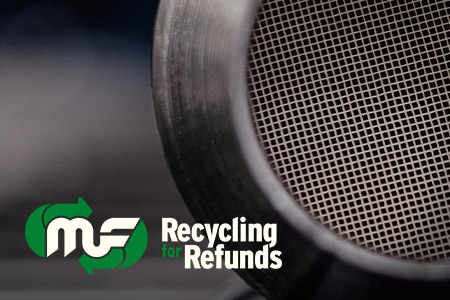
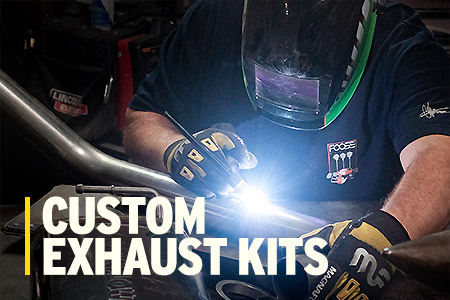
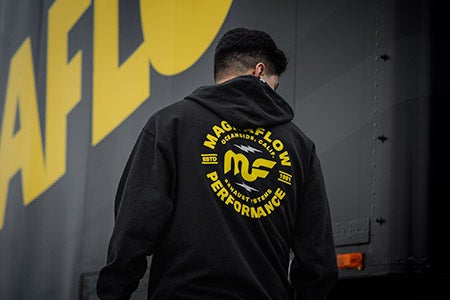
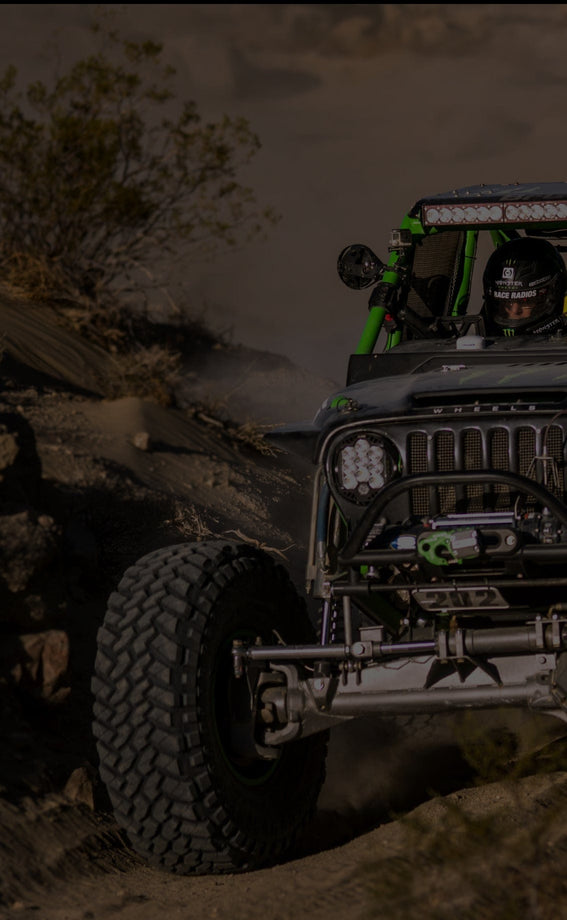





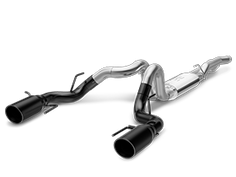
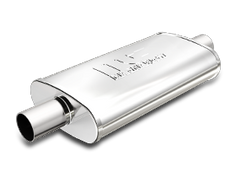
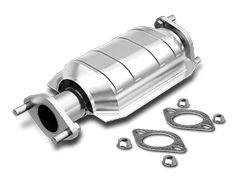
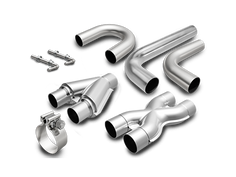
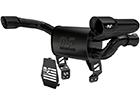
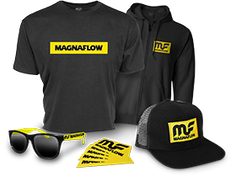









Comments